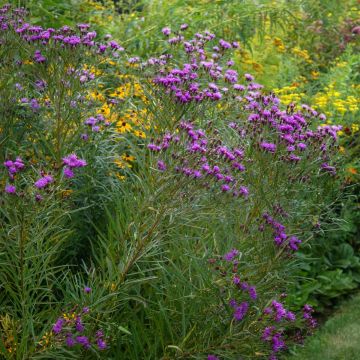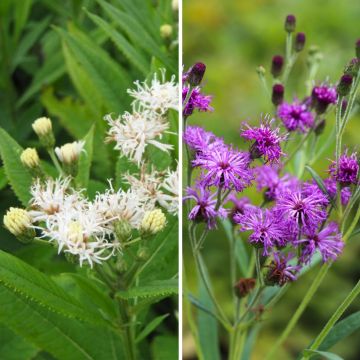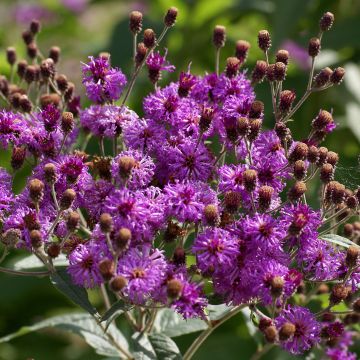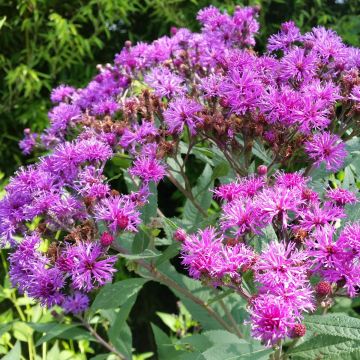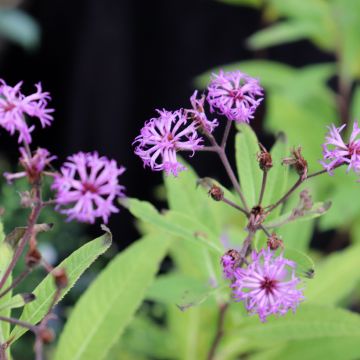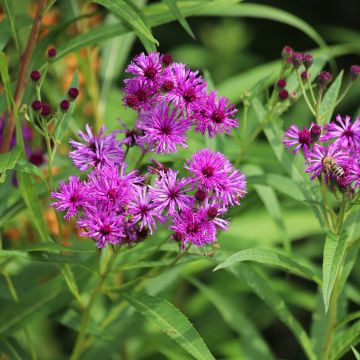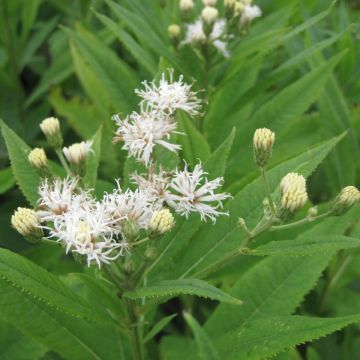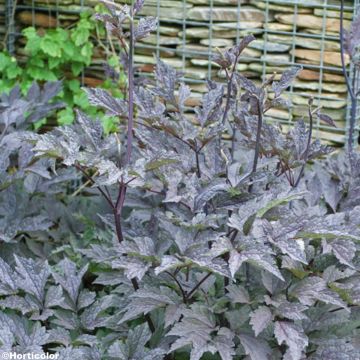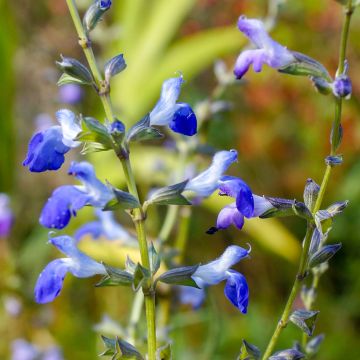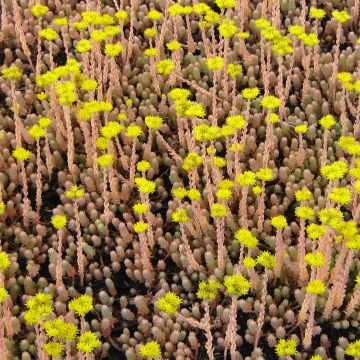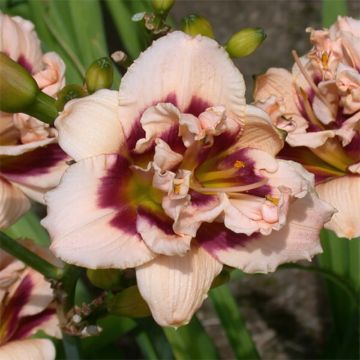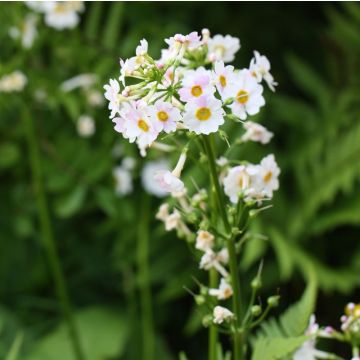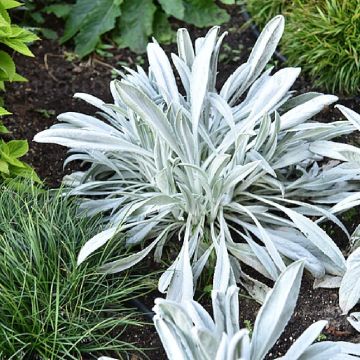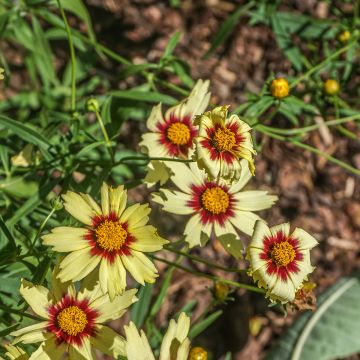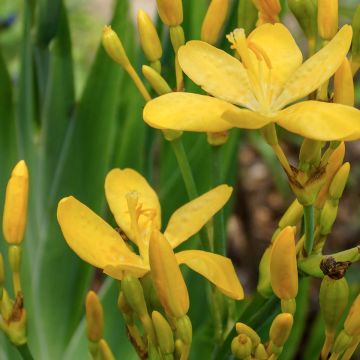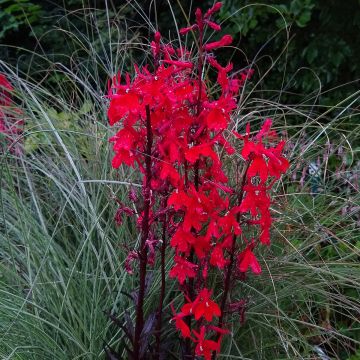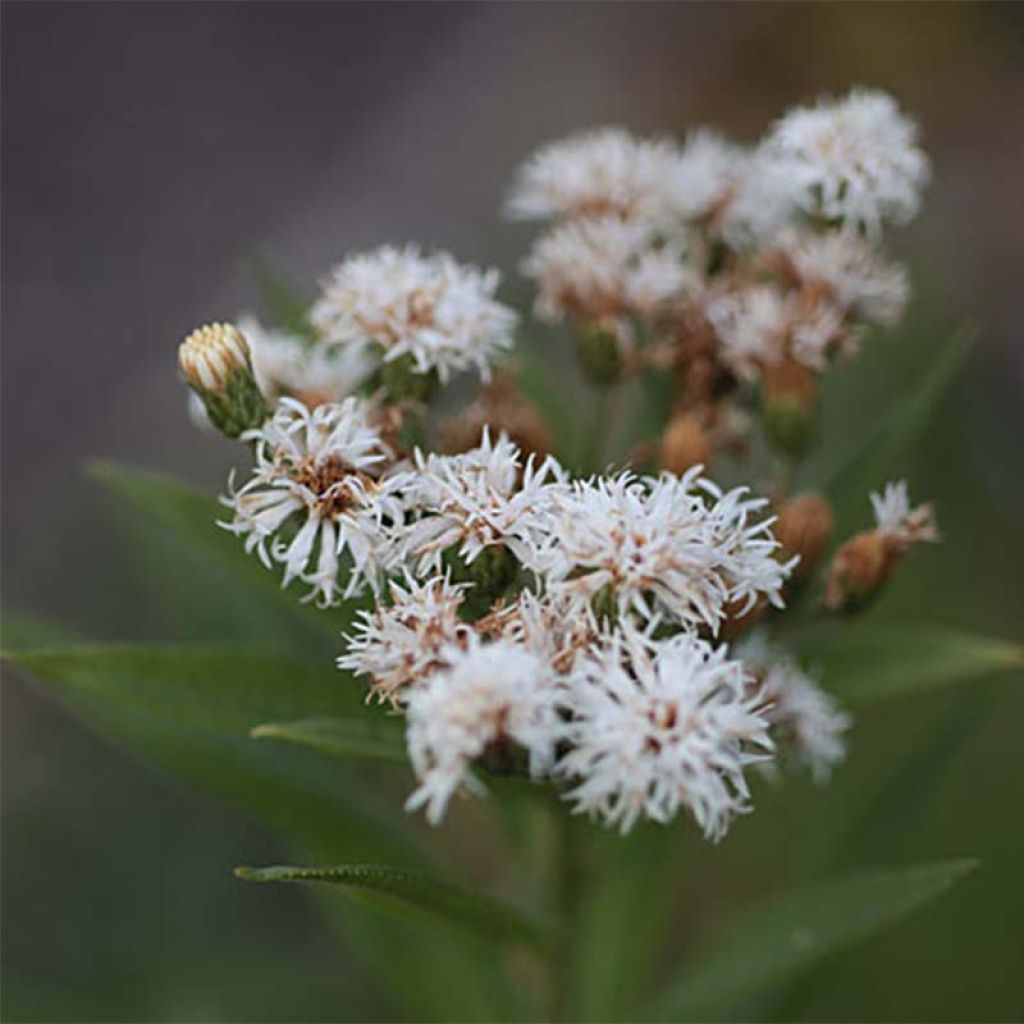

Vernonia noveboracensis White Lightning
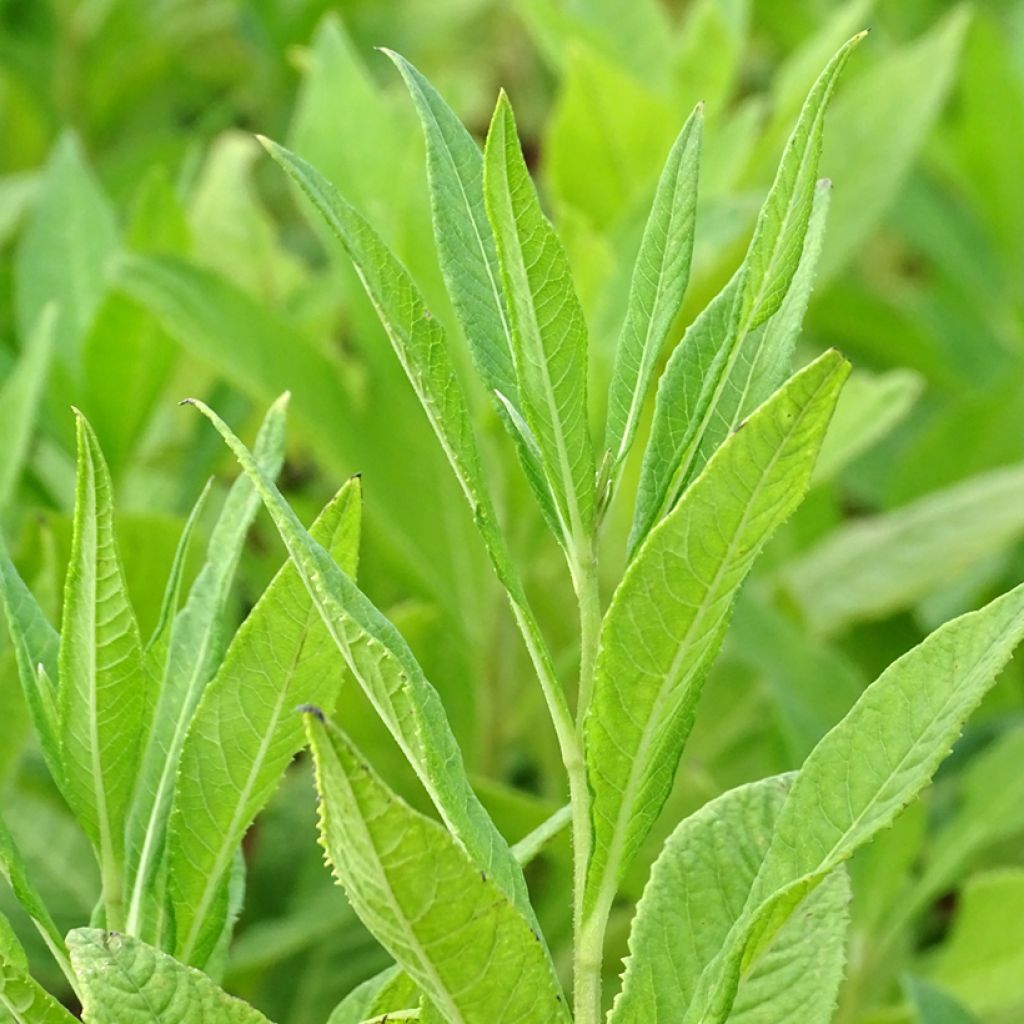

Vernonia noveboracensis White Lightning
Vernonia noveboracensis White Lightning - Ironweed
Vernonia noveboracensis White Lightning
New York Ironweed
This item cannot be shipped to the selected country
Delivery charge from €5.90
Delivery charge from €5.90
More information
Schedule delivery date,
and select date in basket
This plant carries a 12 months recovery warranty
More information
We guarantee the quality of our plants for a full growing cycle, and will replace at our expense any plant that fails to recover under normal climatic and planting conditions.
From €5.90 for pickup delivery and €6.90 for home delivery
Express home delivery from €8.90.
From €5.90 for pickup delivery and €6.90 for home delivery
Express home delivery from €8.90.
Does this plant fit my garden?
Set up your Plantfit profile →
Description
Vernonia noveboracensis ‘White Lightning’ is a tall perennial with fluffy white autumn flowers. From August to October, it will enhance the back of borders with its large umbels carried on straight and sturdy stems. Its flowers have ruffled petals and contrast beautifully with its dark green, narrow and lanceolate foliage. Easy to grow and very hardy, this vernone just needs to be planted in rich and moist soil. It will be perfect in an informal, wild, romantic garden, at the back of borders or on the edge of a pond where it will bring height and light.
Vernonia noveboracensis ‘White Lightning’ belongs to the Asteraceae family. Native to the Northeast of the United States, Vernonia is named after the English botanist William Vernon. Vernonia noveboracensis means "Vernone from New York"; the cultivar ‘White Lightning’ was a new introduction in 2014 by the German company Jelitto Staudensamen. This herbaceous perennial with a woody base will reach approximately 2m (7ft) high with a spread of 80cm (32in). Its grows quite quickly, but takes two years to establish. It forms a clump of large and robust, straight and sparsely branched stems, carrying alternate, simple, narrow lanceolate, dark green leaves. From August to October, or even November, it has lots of small, fluffy, bright white pompons flowers, arranged in larger terminal corymbs than the species, turning rust-coloured with age (hence the name "ironweed"). The flowers all open at the same time, last a long time and attract a large number of butterflies, providing a magnificent spectacle.
This very hardy vernone is easy to grow, pairs well with lots of plants and creates magnificent autumn compositions on the edges of a pond. Plant it alongside eupatoires, which it resembles, or Lythrum salicaria, Filipendula rubra 'Venusta' and Euphorbia palustris. In a wilder style, at the back of borders, this imposing perennial forms a very successful combination with large grasses: Miscanthus, Panicum, Stipa...
Report an error about the product description
Vernonia noveboracensis White Lightning - Ironweed in pictures
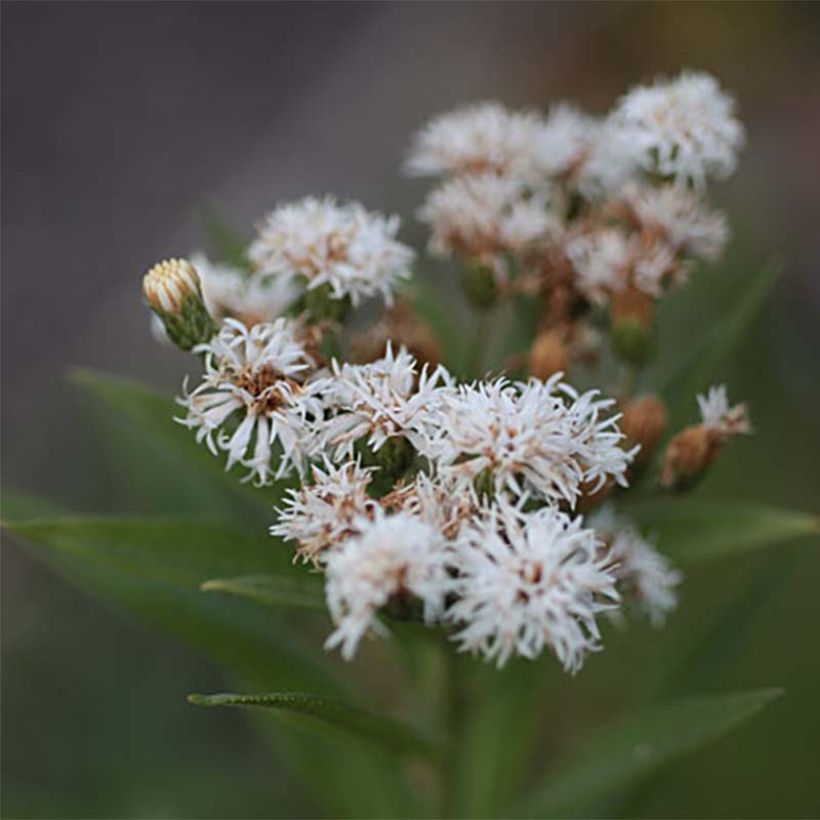

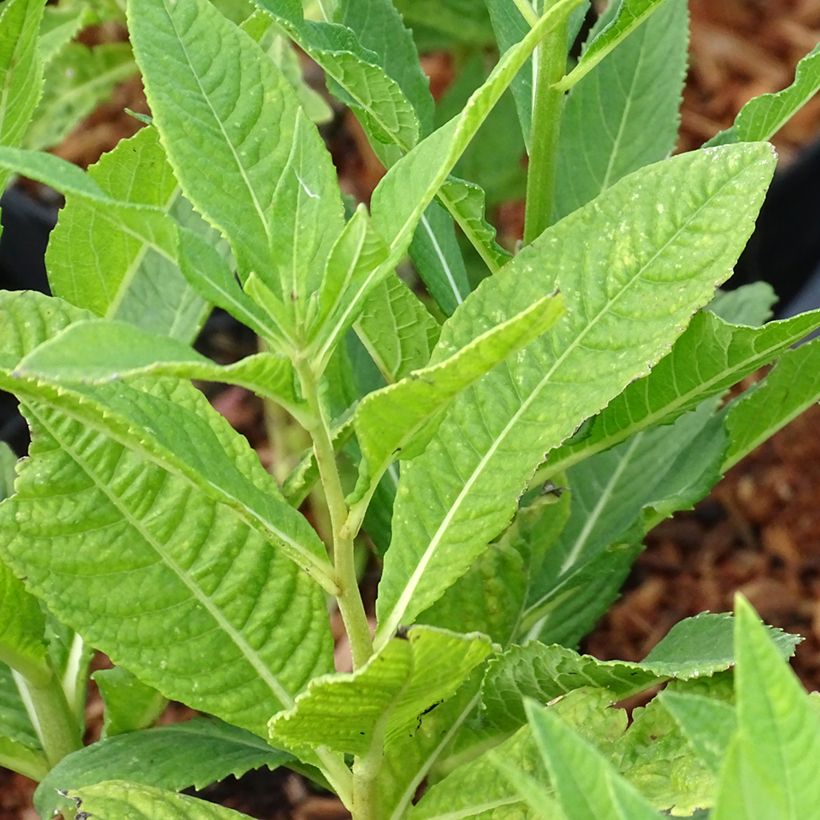

Flowering
Foliage
Plant habit
Botanical data
Vernonia
noveboracensis
White Lightning
Asteraceae
New York Ironweed
Cultivar or hybrid
Other Vernonia - Bitterleaf
Planting and care
Vernonia noveboracensis 'White Lightning' is an excellent perennial plant that deserves to be better known. It thrives in sunny locations and prefers moist, rich, and deep soils, even clay if not waterlogged. Add leaf compost and coarse sand to heavy soil when planting. The clumps can be divided in spring or autumn if they get too big. Cut back the dried vegetation at the end of flowering.
Planting period
Intended location
Care
This item has not been reviewed yet - be the first to leave a review about it.
Summer flowering perennials
Haven't found what you were looking for?
Hardiness is the lowest winter temperature a plant can endure without suffering serious damage or even dying. However, hardiness is affected by location (a sheltered area, such as a patio), protection (winter cover) and soil type (hardiness is improved by well-drained soil).

Photo Sharing Terms & Conditions
In order to encourage gardeners to interact and share their experiences, Promesse de fleurs offers various media enabling content to be uploaded onto its Site - in particular via the ‘Photo sharing’ module.
The User agrees to refrain from:
- Posting any content that is illegal, prejudicial, insulting, racist, inciteful to hatred, revisionist, contrary to public decency, that infringes on privacy or on the privacy rights of third parties, in particular the publicity rights of persons and goods, intellectual property rights, or the right to privacy.
- Submitting content on behalf of a third party;
- Impersonate the identity of a third party and/or publish any personal information about a third party;
In general, the User undertakes to refrain from any unethical behaviour.
All Content (in particular text, comments, files, images, photos, videos, creative works, etc.), which may be subject to property or intellectual property rights, image or other private rights, shall remain the property of the User, subject to the limited rights granted by the terms of the licence granted by Promesse de fleurs as stated below. Users are at liberty to publish or not to publish such Content on the Site, notably via the ‘Photo Sharing’ facility, and accept that this Content shall be made public and freely accessible, notably on the Internet.
Users further acknowledge, undertake to have ,and guarantee that they hold all necessary rights and permissions to publish such material on the Site, in particular with regard to the legislation in force pertaining to any privacy, property, intellectual property, image, or contractual rights, or rights of any other nature. By publishing such Content on the Site, Users acknowledge accepting full liability as publishers of the Content within the meaning of the law, and grant Promesse de fleurs, free of charge, an inclusive, worldwide licence for the said Content for the entire duration of its publication, including all reproduction, representation, up/downloading, displaying, performing, transmission, and storage rights.
Users also grant permission for their name to be linked to the Content and accept that this link may not always be made available.
By engaging in posting material, Users consent to their Content becoming automatically accessible on the Internet, in particular on other sites and/or blogs and/or web pages of the Promesse de fleurs site, including in particular social pages and the Promesse de fleurs catalogue.
Users may secure the removal of entrusted content free of charge by issuing a simple request via our contact form.
The flowering period indicated on our website applies to countries and regions located in USDA zone 8 (France, the United Kingdom, Ireland, the Netherlands, etc.)
It will vary according to where you live:
- In zones 9 to 10 (Italy, Spain, Greece, etc.), flowering will occur about 2 to 4 weeks earlier.
- In zones 6 to 7 (Germany, Poland, Slovenia, and lower mountainous regions), flowering will be delayed by 2 to 3 weeks.
- In zone 5 (Central Europe, Scandinavia), blooming will be delayed by 3 to 5 weeks.
In temperate climates, pruning of spring-flowering shrubs (forsythia, spireas, etc.) should be done just after flowering.
Pruning of summer-flowering shrubs (Indian Lilac, Perovskia, etc.) can be done in winter or spring.
In cold regions as well as with frost-sensitive plants, avoid pruning too early when severe frosts may still occur.
The planting period indicated on our website applies to countries and regions located in USDA zone 8 (France, United Kingdom, Ireland, Netherlands).
It will vary according to where you live:
- In Mediterranean zones (Marseille, Madrid, Milan, etc.), autumn and winter are the best planting periods.
- In continental zones (Strasbourg, Munich, Vienna, etc.), delay planting by 2 to 3 weeks in spring and bring it forward by 2 to 4 weeks in autumn.
- In mountainous regions (the Alps, Pyrenees, Carpathians, etc.), it is best to plant in late spring (May-June) or late summer (August-September).
The harvesting period indicated on our website applies to countries and regions in USDA zone 8 (France, England, Ireland, the Netherlands).
In colder areas (Scandinavia, Poland, Austria...) fruit and vegetable harvests are likely to be delayed by 3-4 weeks.
In warmer areas (Italy, Spain, Greece, etc.), harvesting will probably take place earlier, depending on weather conditions.
The sowing periods indicated on our website apply to countries and regions within USDA Zone 8 (France, UK, Ireland, Netherlands).
In colder areas (Scandinavia, Poland, Austria...), delay any outdoor sowing by 3-4 weeks, or sow under glass.
In warmer climes (Italy, Spain, Greece, etc.), bring outdoor sowing forward by a few weeks.

































